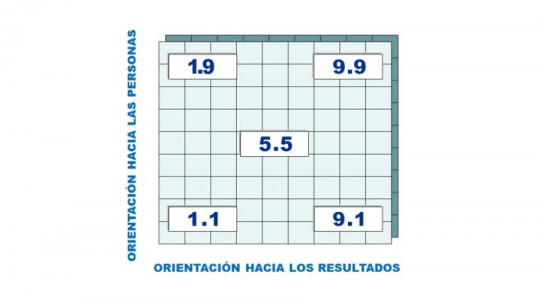When working together hand in hand with other people, the dynamics established between workers make the difference. Even if we dedicate the same time, the same material resources and staff with a sufficient level of training, the fact of working in one way or another with those ingredients results in more or less production.
We’ll see now What are the differences between group and team? given that it is this type of involvement and coordination that means that, with the same expense, productivity in companies and organizations is taken to its maximum potential, or not.
Main differences between group and team
When it comes to the world of Work and Organizational Psychology, the definitions used about what groups and teams are are different. And they are not only theoretical, but as we will see they refer to two types of phenomena that produce very different results.
1. Individualist vision and collectivist vision
Groups are, fundamentally, groups of people who share a space, a place, and who show a certain degree of tolerance among themselves, which makes it something stable.
In the context of companies and organizations, a group is also a functional piece of a system of people that produces something, whether for commercial purposes or not. However, just because a useful function is performed does not mean that the group has a shared goal. Instead, each person has their goal
In other words, this type of association is governed by individualism: people reach an agreement to reach a goal that they had already set a priori individually.
The team, on the other hand, is moved by collectivism, the notion that there are experiences that can only be lived by uniting and connecting with others and that certain goals are fundamentally collective in nature For example, environmental protection is not a goal that can be achieved objectively, nor is it a creative task that several artists must work on, either.
2. Proactive spirit or passivity
The teams adapt in real time to unforeseen events, since all the people who make them up go together. If a need arises that is different from those that defined the job, for example, it is not necessary to convince others to adapt to this new circumstance; In any case, new proposals are informed and jointly sought.
Therefore, in teams, every time the way of working is changed and new unforeseen problems arise, these are immediately reported, instead of continuing to work through inertia.
In groups, on the other hand, the mentality leads to an attitude defined by passivity. Therefore, for example, if unforeseen changes appear, it is necessary to negotiate again with the individuals who form it , since they can stick to the idea that they do not have to do anything more than what they were doing previously. Any change that occurs in the way of working is seen as a separate piece from the rest, which does not have to imply that changes must be considered in other processes directly related to the previous one.
3. Communicative agility or verticality
In groups, communication flows are usually vertical, since they are limited to the hierarchical relationships specified in the organization chart; It is simply not mandatory to establish other routes through which information circulates.
In teams, however, Communication also flows a lot informally , although these communication routes do not appear in the organization chart. This does not mean that the organization encourages a mix between personal and professional relationships, but rather that there is greater communicative flexibility.
4. Flexibility and rigidity
In teams, the number one priority is to ensure that the group can adapt to changes and reach the goals set collectively, and that is why the formal is subordinated to the useful. Although it may seem contradictory, it often works better if you know how to leave aside the rigid structure of the rules established in writing (of course, with the agreement of all the parties involved).
In groups, however, the rigidity of the rules is used not for its usefulness, but as an excuse so as not to face new situations or have to work harder during the adaptation phase to the changing situations that come our way. In other words, the rules are assumed as a dogma, something that must be followed to avoid complications, although this, paradoxically, can lead to certain problems caused by the lack of adaptation to change becoming chronic and generating totally avoidable discomfort.
5. Potential for opportunity or blindness to it
Teams are always much more skilled at detecting hidden opportunities, given that communication flows and the proposal of ideas that “break the mold” is not penalized.
In groups, however, The simple idea of changing the direction of what has been done causes rejection , and you need a very good excuse for something as simple as proposing new strategies or group interests. This means that, even if you sense an opportunity, you never go beyond this phase, and neither value that possibility nor, of course, undertake new missions. On many occasions the person who came up with the idea does not even communicate it to a co-worker.









